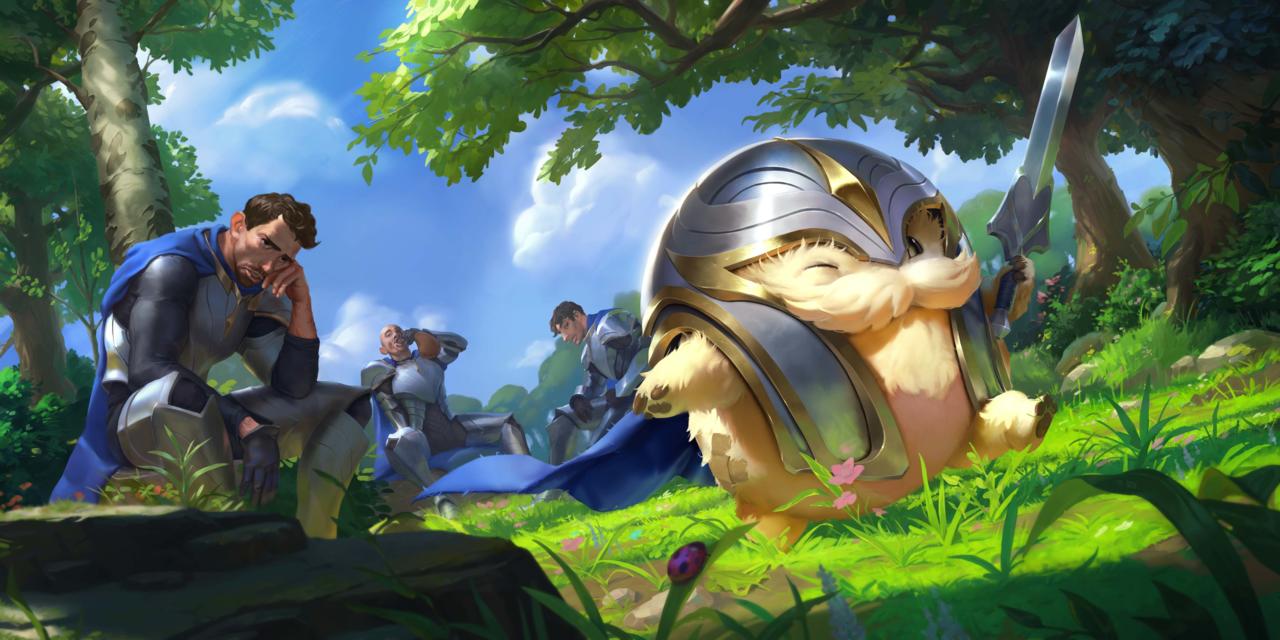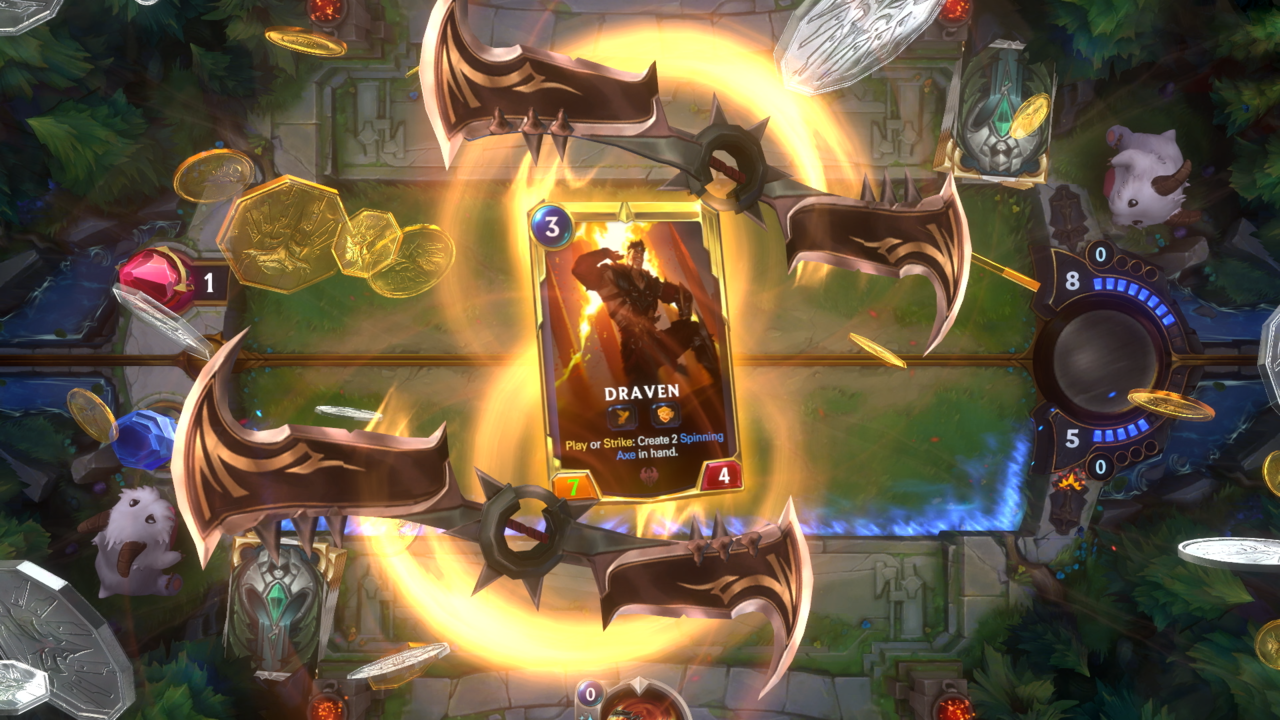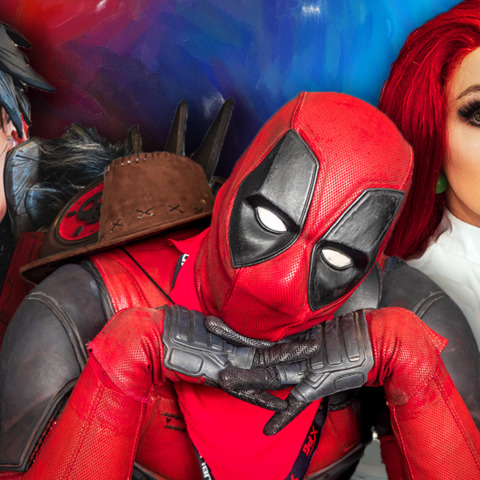Legends of Runeterra is a new digital card game based on the League of Legends universe. Based on our time with it during PAX Aus 2019, it actually feels like it has some interesting new takes on the genre to help it stand out in a sea of deck-building giants. Here's a rundown on how it works.
Naturally, Legends of Runeterra is based around Champions, many of whom will be familiar to League of Legends fans. Champions and other cards are associated with six of the major regions of Runeterra (Demacia, Noxus, Ionia, Piltover & Zaun, Freljord, and the Shadow Isles), which represent the idea of classes or colours, in other card games. But the game features plenty of aspects that will be familiar to players of other digital card games, too.

GAME FLOW
Your mana pool increases steadily each turn, much like Hearthstone, which sets the pace of play. Mana allows you to play things like creature and champion cards, which have the typical attack and defense stats as well as other abilities or buffs which decide how they'll fair in battle. You want to be able to attack your opponent's Nexus (which every MOBA-fan should hopefully be familiar with) bringing its health to 0 to win the game. Games tend to last for about 15 to 20 minutes.
However, where Legends of Runeterra separates from other examples of the genre is in the finer details on how you can do Nexus damage. Spells, for instance, can do direct damage but they use a different mana pool from your character cards and can almost always be countered. Some spells will be fast or slow, and they queue up in the middle of the battlefield according to their order.
All cards are played out in turns, which is not something I'm used to seeing in digital card games. These spell turns are segmented into rounds, where one player will be on the offensive and the other defends. There are multiple turns in these rounds, where each player has a chance to play their characters and spells until the actual attack. This adds some interesting strategy--you can bait another person out by slowly adding to your arsenal, rather than playing everything at once. Then, the attack actually happens and unless a status on the card says otherwise, it's blockers choice.

CHAMPIONS
The champion cards have objectives on them, which allow you to level up those cards and become more powerful so long as they aren't taken out during the battle. You can choose to use one champion to build your decks around or add more--which is limited depending on the game style--and the idea is to create a synergistic playstyle. This aspect feels reminiscent of Magic The Gathering and the choices it offers in mixing colours for new playstyles.
For example, a champion may level up after you've dealt a certain amount of damage to enemies and another may require you to have targeted a set number of enemies. Having both of these cards in the same deck would allow you to level them up and gain their heightened abilities at the same time, without wasting any resources. Perhaps stacking this deck with cheap cards so you can target enemies faster would help you level up even faster to gain an advantage. On the other hand, having different objectives might also offer more flexibility, so deciding how you build decks to achieve your own goals looks like it will add several layers or potential strategy to games.
For fans of the lore behind League of Legends, there's also the promise of plenty of new narrative content. Fresh stories will also play out through Legends of Runeterra with plans to introduce new characters and champions as the game builds, which will also allow for new cards and playstyles. Legends of Runeterr and League of Legends share the same universe, so it's not some weird spinoff where everyone's just playing cards in a tavern.

META AND MICROTRANSACTIONS
Legends of Runeterra all plays quite well, and as someone who's quite familiar with different digital card games, I was able to pick it up quickly after a few rounds in the tutorial. It has the same drag and drop style you'll likely be familiar with, and getting into it is just a matter of learning all the new terms, quirks, and cards. The game definitely struck me as the kind that's simple on the surface, but with extra complexity stashed away in the deck-building meta, if that's your jam.
The good, and somewhat surprising news is that when it comes to deckbuilding, there appear to be no purchasable random card packs. Legends of Runeterra is still a free-to-play game, however, and though you can't spend your hard-earned real money on random cards, you can instead pay a set price for "wild cards." These differ in cost based on rarity, but are a straight swap for whichever card you want in that tier. Even then, this system is limited to a certain number of purchases per week, and I was assured by Riot representatives that it's not the kind of game you can pay-to-win.
Instead, the only way to get a substantial amount of cards is by playing, but it does look like these can be somewhat unpredictable. You can complete quests and level up to unlock cards from your chosen region, which can be changed at any time. Playing will also level up your weekly vault, which contains more chests full of more random cards. But the ability to pick and choose what you want to do to unlock cards was emphasised as a way to give players at least some agency over how they play the game.
The idea appears to be that those who put the time in--regardless of what they do--will have the most cards and diverse decks, while still giving players on the other end of the spectrum the ability to obtain specific cards with a level of certainty. There did seem to be a fair amount of cards available from the onset, at least in the build we played, but how this system fares for more casual players is something we need to wait and see.
You'll also be able to use real money on cosmetics, and Legends of Runeterra is an intensely visual game. The card art is stunningly detailed and the board is very Hearthstone-like, featuring little interactive touches. Cards animate when played and sometimes even emoji-style stickers will pop on the screen. When champion cards level up, they'll take over the whole screen to play an animation and even attacking seems a bit more extra than most other digital card games. I could still tell what was happening most of the time, so the flair doesn't feel like it gets in the way but, it is a visual feast.

ONGOING SUPPORT
While not being presented as an esport yet, Riot has promised regular monthly balance updates to keep the meta shifting, as well as a ranked system currently in development. The general synopsis seems bent against the level of randomness that can often be present in card games, so Legends of Runeterra could be quite competitive in a very different way to what we're used to seeing in the genre.
If you're curious about Legends of Runeterra, the good news is you can pre-register for your chance to play it now, and unlock the exclusive Moonstruck Poro Guardian at launch. The announcement comes as a part of the League of Legends 10th anniversary celebration and you'll find a selection of folks with access streaming the game live as we speak. In a month's time, there will be a five-day preview where more people who pre-registered will be allowed in, and then a larger closed beta in 2020 before launch on PC and Mobile platforms sometime during that year.























































